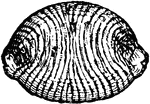The Snails and Slugs ClipArt gallery includes 274 illustrations. Snails and slugs are gastropod mollusks. There are many varieties, including sea snails, land snails, and freshwater snails. Slugs are simply snails without shells.
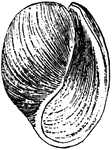
Acera
"A genus of mollusks, of the familiy bullidæ or Tornatellidæ, belonging to the tectibranchiate…

Agate Shell
"A genus of land-snails, of the family Helicidæ. Typified by the large agate-shells of Africa."-Whitney,…
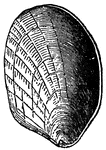
Aplysia Depilans (Linn.)
"The Molluscous Gasteropoda have the organs of respiration formed for aerial respiration or for respiration…

Aplysia Inca (D'Orbigny)
"The Molluscous Gasteropoda have the organs of respiration formed for aerial respiration or for respiration…

Aplysia Nervous System
"Nervous System of the Aplysia, a Gasteropodous Mollusc: c, cerebral ganglia; g, thoracle or sub-aesophageal…

Apple Shell
"The species are numerous, and are chiefly found in the fresh waters of tropical and subtropical countries,…
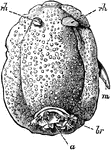
Archidoris Tuberculata
"Doris (Archidoris) tuberculata. a, anus; br, branchiae; m, penis; rh, rh, tentacles." -Parker, 1900

Clio borealis
"The species of the genus Clio, belonging to this order, exist in prodigious numbers in the…

Buccinum Senticosum (Linnaeus)
"The Purpuras have a classical name and history, having furnished the Greeks and Romans with the brilliant…

Bulla Ampulla (Linnaeus)
"The animals have a well-developed shell, the form of which is elegant and delicate in structure. They…
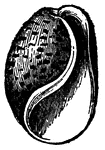
Bulla Aspersa (Adams)
"The animals have a well-developed shell, the form of which is elegant and delicate in structure. They…

Bulla Oblonga (Adams)
"The animals have a well-developed shell, the form of which is elegant and delicate in structure. They…

Leach's bursatella
"The descriptions of it are very obscure; it appears to be destitute of shell, the body globular, the…

Carinaria
"The Carinaria has an elongated transparent body, dotted with elevated points, and furnished toward…

Cassis Canaliculata (Brugieres)
"In the genus Cassis the shell is oval, convex, and the spire is not of considerable height.…

Cassis Glauca (Linnaeus)
"In the genus Cassis the shell is oval, convex, and the spire is not of considerable height.…

Cassis Madagascariensis (Lamarck)
"In the genus Cassis the shell is oval, convex, and the spire is not of considerable height.…
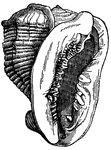
Cassis Madagascariensis (Lamarck)
"In the genus Cassis the shell is oval, convex, and the spire is not of considerable height.…

Cassis Rula (Linnaeus)
"In the genus Cassis the shell is oval, convex, and the spire is not of considerable height.…

Cassis Zebra (Lamarck)
"In the genus Cassis the shell is oval, convex, and the spire is not of considerable height.…

Cerithium Aluco.
"There are some species which are chiefly found in the muddy bottoms, and more frequently at the mouths…
Cerithium Fasciatum (Brug.)
"There are some species which are chiefly found in the muddy bottoms, and more frequently at the mouths…
Cerithium Giganteum (Lamarck)
"There are some species which are chiefly found in the muddy bottoms, and more frequently at the mouths…

Common Clione
A modern shell-less pteropod. Called the common clione, naked sea butterfly, and Clione limacina.

Scorpion Conch
The scorpion shell (Pteroceras lambis) is a large sea snail in the Strombidae family of conchs.

Conus Gloria Maris (Chemn.)
"The genus Conus is especially rich in species, as well as numerous individuals. This group…

Conus Nobilis (Linn.)
"The genus Conus is especially rich in species, as well as numerous individuals. This group…

Conus Tescallatus (Born.)
"The genus Conus is especially rich in species, as well as numerous individuals. This group…

Conus Textilis (Linn.)
"The genus Conus is especially rich in species, as well as numerous individuals. This group…
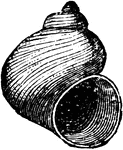
Cyclonema Mollusk
A mollusk radiate from the Paleozoic time, Cyclonema cancellata from the Clinton group.

Cypraea Argus (Linn.)
"The Cowries are found at a little distance from the shore, generally in clefts of the rocky bottoms;…
!["The Madagascar Cowry [is] beautifully marked, having the general appearance of being mammillated all over."](https://etc.usf.edu/clipart/51500/51521/51521_cypra_madaga_mth.gif)
Cypraea Madagascariensis (Gmel.)
"The Madagascar Cowry [is] beautifully marked, having the general appearance of being mammillated all…

Cypraea Moneta (Linnaeus)
"The Money Cowry is a little, oval shell, depressed, flat below, with very thick edges and slightly…
!["The Granular Cowry [is] beautifully marked, having the general appearance of being mammillated all over."](https://etc.usf.edu/clipart/51500/51525/51525_cypra_nucleu_mth.gif)
Cypraea Nucleus (Linnaeus)
"The Granular Cowry [is] beautifully marked, having the general appearance of being mammillated all…

Cypraea Tigris (Linnaeus)
"The animal which inhabits these shells is elongated, and is provided with a well-developed mantle,…

Delphinula Sphaerula (Kiener)
"The Monodonta are elegantly marked shells. Some curious specimens from this family come from…

Dissection
"Dissection of snail. T., Short horn; TT., long horn with eye; N., cerebral ganglia; S.G., salivary…

Ampullaria dubia
"The A. dubia is found in the Nile. Several of this genus, brought from Egypt to Paris packed…

Ear-shell
"In these, which are called Ear-Shells, the animal has a shrt muzzle and two branchial plumes;…

Eye of Gasteropod
Section through the cup-shaped eye of a gastropod. Labels: e, epithelium covering body; cv, vitreous…
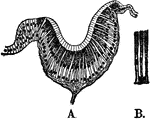
Eyepit of Limpet
A, section through the open eyepit of a limpet. B, the two kinds of retinal cells, pigmented and sensory.

Greek fissurella
"The Greek Fissurella, F. Græca, is found in the Mediterranean and the Indian Ocean.…

Fu'sus
Fu'sus is a genus of gastropods, which are allied to the British whelk and American conch, and which…











